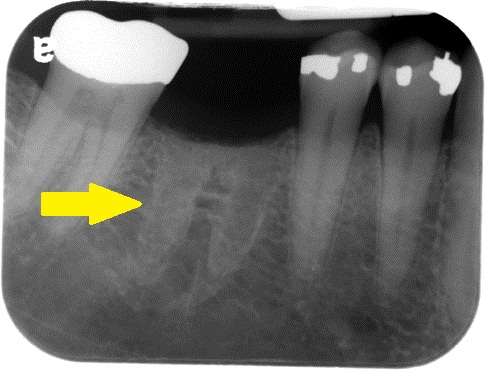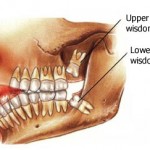Third molars erupt in the mouth when a person reaches the age of 17-21 years, when most individuals become adults, hence the term “wisdom teethâ€. However, not everyone has wisdom teeth, and not having one should not be a case for concern. According to medterm.com, 7.6% of the population does not have wisdom teeth all their life. On the other hand, some appear to not have them, but they are actually embedded within the jaw due to lack of space to erupt. Hence a visit to the dentist is essential to check whether your tooth is missing, or whether there are problems involved in its eruption like impaction and infection. Here are some reasons that indicate you should have your tooth pulled out: Continue reading
Category Archives: Oral Surgery
What is a Bone Spicule?
Definition
A bone spicule could derive different meanings in different medical fields. This term is being used in dentistry, osteology and ophthalmology.
In dentistry, it is characterized by bony fragments or protrusions either loose or still attaching to jaw bone after a tooth extraction. This happens because loose fractured bony fragments may retain in the socket of an extraction and in time it would emerge from the gum covering the socket. These bone fragments are derived from the bone covering the roots of a tooth. When they are being left behind, your body treats them as foreign matters, so there would be an inflammatory response towards the bony fragments. Hence it would cause swelling and pain that depict an infection. Continue reading
Wisdom Teeth Extraction Complications
There might be complications after any kind of extraction including wisdom teeth extraction. It is either due to the natural of the surgery itself or due to insufficient experience by the clinician.
1.      Soft tissue injury – The flap that the dentist raised ( cut so that the he can visualize and access to the embedded wisdom tooth) might be tear off during the procedure,it might be due to inadequate size of the flap or he uses excessive force to retract the flap. To manage it, the clinician will smoothen the edges and suture back the flap. The rotating bur that the dentist uses to remove bone to allow removal of your wisdom tooth might injures your lips or any soft tissues if he is not careful. If it happens, Vaseline or any antibiotic ointment can be applied to cool that area and it can heal around 5 to 10 days time.To prevent any scarring or to decrease healing time, you can keep the injured area moist. Continue reading
Care of Mouth After Tooth Extraction
(img source frm yercaud dental care)
So, what are the instructions that we should follow after we have our teeth removed? Normally, our dentist in charge will explain what will the patients experience and basic post operative instructions will be given. What can we expect after undergoing extraction? Most of us will have slight oozing which is consider normal, it happens around 24 hours and don’t be paranoid because most of it is saliva . Some may even ring up their dentist because of this. How do we deal with post operative bleeding? Your dentist will first ask you to bite firmly on a piece of gauze for 30 minutes so that blood can be clot around the socket. If oozing continues, you may change another small, damp gauze at that area and bite on it firmly to control bleeding. Activities such as smoking, drinking with straw, spitting should be avoided because these activities can aggravate bleeding. Please be reminded that oozing at night is normal. If there is abnormal amount of bleeding occurs, patients should consult the dentist in charge for further advice. Continue reading
Reasons to Remove Wisdom Teeth
 So when do you need to get your wisdom teeth removed? Most of the time we remove them when they are impacted which means fails to erupt due to clinically or radiographically detactable physical barrier in their eruption pathway or they are positioned in a ectopic way.
So when do you need to get your wisdom teeth removed? Most of the time we remove them when they are impacted which means fails to erupt due to clinically or radiographically detactable physical barrier in their eruption pathway or they are positioned in a ectopic way.
Eruption of third molars occurs around 20-25 years old. Impaction of third molars occur when there is insufficient space for them to erupt , presence of obstructions in eruption path or maybe it is due to genetic causes. Early detection of impacted third molars and early removal is more preferably due to better healing, formation of roots are one third to two third and it is much easier to perform surgery in younger patients. We will perform removal impacted teeth when benefits of removing third molar outweighs the complications. Continue reading
Common Inflammatory Disease of the Jaw Bone
 Inflammatory Disease of the Bone
Inflammatory Disease of the Bone
Inflammation is a protective tissue response to injury or destruction of tissues, which serves to destroy, dilute, or wall off both the injurious agent and the injured tissues. The classical signs of acute inflammation are pain (dolor), heat (calor), redness (rubor), swelling (tumor), and loss of function (functio laesa). Continue reading
Post tooth extraction complications
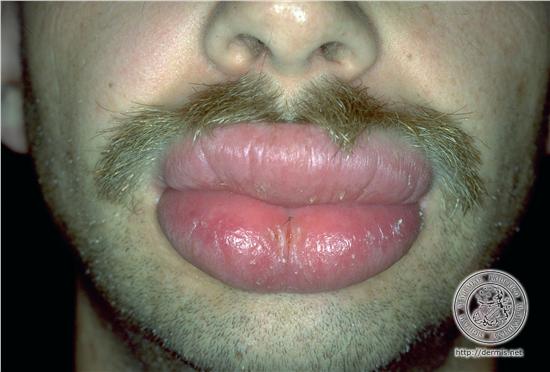 Facial Edema (swelling)
Facial Edema (swelling)
Many surgical dental extractions results in extraction complications like facial edema or facial swelling after surgery. Routine extractions of a single tooth will probably result in swelling that the patient can see, whereas the tooth extraction of multiple impacted teeth with the reflections of soft tissue and removal of jaw bone may result in moderately large amounts of facial swelling. The facial swelling usually reaches its maximum size 24 to 48 hours after the surgical extraction procedure. The facial swelling begins to subside on the third or fourth day and is usually gone by the end of the first week. Increased swelling after the third day may indicate jaw infection at the surgical tooth extraction site. Continue reading
Management of bleeding after a tooth extraction
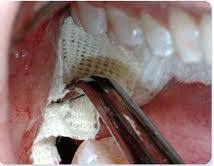 Introduction to the management of tooth extraction bleeding
Introduction to the management of tooth extraction bleeding
Many patients do not know what to expect after having there tooth extracted at the dentist. Some panic when they see some blood on their mouth whereas some do not even bother if they bleed out profusely. This is a simple instruction guide for patients to follow so that they can manage the bleeding at the surgical tooth extraction site. Continue reading
Management of pain and promotion of healing after a tooth extraction
 Management of post surgical tooth extraction pain
Management of post surgical tooth extraction pain
All patients should expect a certain amount of tooth extraction pain after a surgical dental extraction. Therefore, it is important for the dental surgeon to discuss this issue carefully with each patient before discharging them from the office. The surgeon will have to help the patient to have a realistic expectation of what type of pain that may occur and the intensity of the pain as well. Continue reading
What Dental Corrective Surgery Could Do For You Part 2
Continue from first part of Dental Corrective Surgery here
Dental Veneer
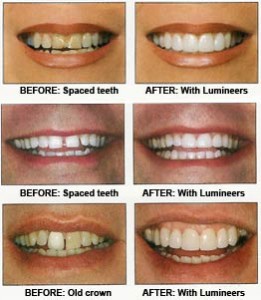
Before and after of dental veneer treatment @ websiteoptimization.com
Dental veneers are thin porcelain or resin composite material custom made to be bonded onto the surfaces  of your teeth to change their color, size, alignment, shape and length.
Procedure
The front part of the tooth has to be trimmed down a little to allow the veneer to be bonded. Porcelain veneer is more aesthetic than resin composite veneer as it is stain resistant and it mimics actual tooth due to its light reflection qualities.
Who needs it?
People with
- Uneven discolored teeth
- Chipped or fractured teeth
- Crooked teeth
- Heavily filled teeth
Cost
Generally, a dental veneer costs $500 to $1500 depending on areas, materials used and complexity of cases.
Caveat
Veneers are not as strong as dental crowns. You should not bite hard objects with your veneered teeth. If the porcelain veneer cracks it could only be replaced and not repaired. The color of the porcelain veneer never change, so if you plan to do teeth whitening please do so before having a dental veneer.
